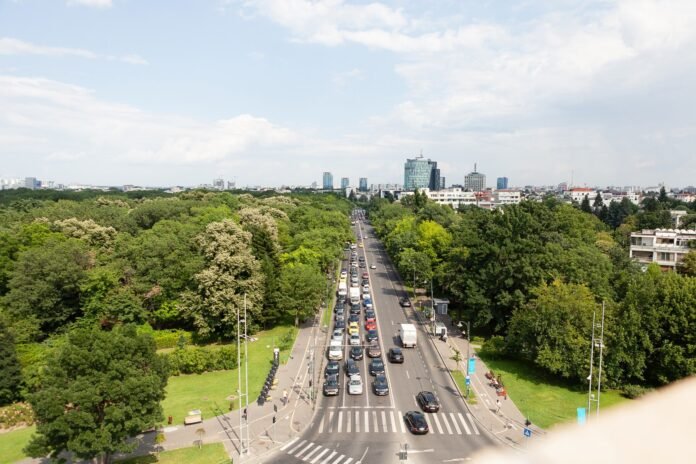Introduction: In the world of automobiles, especially when it comes to automatic transmissions, the term “PRNDOT” holds significant meaning. PRNDOT refers to the gear shift pattern seen on most modern vehicles equipped with automatic transmissions. These letters—P, R, N, D, O, and T—represent different modes that control the vehicle’s movement. Although the meaning of these letters is commonly known, there remains confusion around their precise purpose and how they function in the overall driving experience. This article aims to clear up that confusion by explaining the significance of each gear setting in the PRNDOT pattern, its importance for both safety and performance, and how drivers should use them for the best experience behind the wheel.
1. P – Park: The Importance of Parking Your Vehicle Safely
The “P” on your gearshift stands for “Park,” a critical setting for securing your vehicle when you are not driving. The Park gear locks the transmission, preventing the vehicle from rolling, regardless of the incline. When the vehicle is in Park, the engine cannot be started unless the gear shift is in the “P” position, adding an extra layer of security to prevent accidents. It’s important to engage this gear properly before exiting the vehicle. Failing to do so can lead to rolling, even on flat surfaces, potentially causing damage to the car or injury to individuals nearby. Always ensure that your car is on a flat surface or, if on an incline, apply the parking brake in addition to shifting to “P” for optimal safety.
2. R – Reverse: Understanding Reverse Gear Mechanics
The “R” on your gearshift stands for “Reverse,” which is used when you need to move the vehicle backward. Engaging reverse allows the engine to power the wheels in the opposite direction of normal forward motion. This gear is essential when parking, maneuvering out of tight spots, or backing into a driveway. When shifting into reverse, it’s crucial to first ensure that the area behind the car is clear of obstacles, people, or other vehicles. Always come to a complete stop before shifting into reverse to avoid damaging the transmission or stalling the engine. Many modern vehicles come equipped with backup cameras or sensors to help drivers while reversing, but maintaining situational awareness is key.
3. N – Neutral: Understanding Neutral and Its Uses
The “N” on the gear shift stands for “Neutral,” a gear setting that disengages the engine from the wheels. When the vehicle is in neutral, it means that no power is transmitted to the drivetrain, so the car will coast. Neutral is typically used when the vehicle is idling for long periods, such as at a stoplight, or when you’re starting the engine, as the car won’t move until it is shifted into gear. Prolonged use of Neutral when driving can also be dangerous, as it reduces the driver’s ability to control the vehicle effectively.
4. D – Drive: Optimizing Forward Movement and Fuel Efficiency
The “D” on the gearshift represents “Drive,” which is the standard mode for operating your car while moving forward. In this mode, the vehicle automatically shifts through the various gears as you accelerate or decelerate. For most of your driving, you will spend the majority of your time in Drive, whether you’re cruising down the highway or navigating through city streets. However, understanding the specifics of your vehicle’s shifting behavior can help you improve fuel economy and reduce wear and tear on the transmission. Driving at consistent speeds and avoiding unnecessary hard acceleration or deceleration can contribute to a smoother and more efficient driving experience.
5. O – Overdrive: Enhancing Highway Driving Efficiency
The “O” setting stands for “Overdrive,” a mode typically found on vehicles with automatic transmissions. When engaged, it allows the engine to operate at lower RPMs (revolutions per minute), which reduces fuel consumption and engine wear during extended driving. By prndot understanding how and when to use Overdrive, drivers can increase their vehicle’s fuel efficiency and reduce engine strain on long trips.
6. T – Tow/Haul Mode: Enhancing Performance During Heavy Loads
The “T” stands for “Tow/Haul” mode, a feature in many modern vehicles designed to optimize the car’s performance when carrying or towing heavy loads. When activated, Tow/Haul mode adjusts the vehicle’s shift points, making the transmission hold gears longer, which enhances the car’s ability to maintain power under load. This mode is particularly useful when towing a trailer, boat, or carrying heavy cargo, as it helps prevent the transmission from overworking, which could lead to overheating or excessive wear. Tow/Haul mode also typically engages engine braking, allowing the car to slow down more effectively when descending steep grades. Understanding how to use this mode can prevent damage to both the vehicle and the load, ensuring a safer and more efficient towing experience.
Conclusion:
Understanding the PRNDOT gear shift pattern is crucial for anyone driving an automatic transmission vehicle. Each setting—P, R, N, D, O, and T—has a specific purpose, contributing to both the vehicle’s safety and performance. Whether you’re parking your car, reversing into a spot, driving on the highway, or towing a trailer, knowing when and how to use each gear properly can not only improve your driving experience but also extend the lifespan of your vehicle’s transmission. By following best practices for each gear mode and staying aware of the driving conditions, you can ensure both optimal efficiency and safety on the road.


